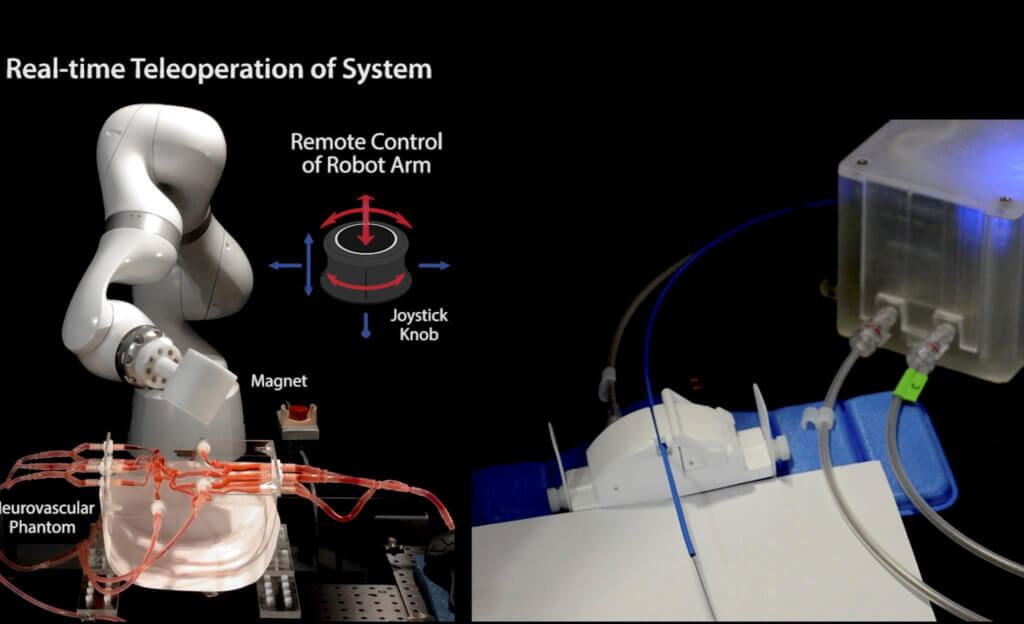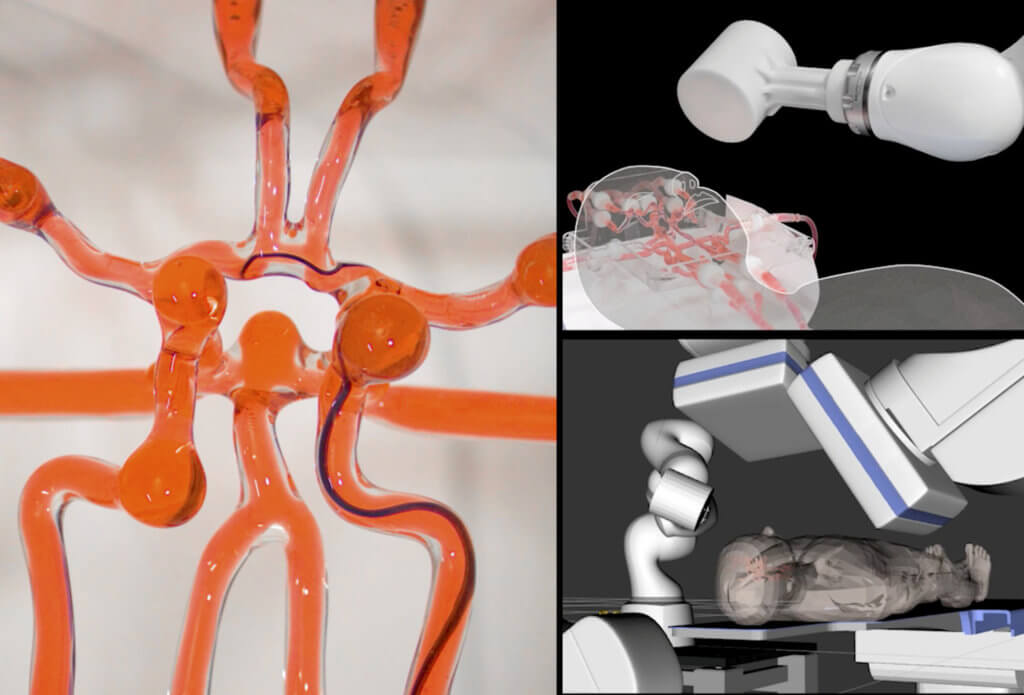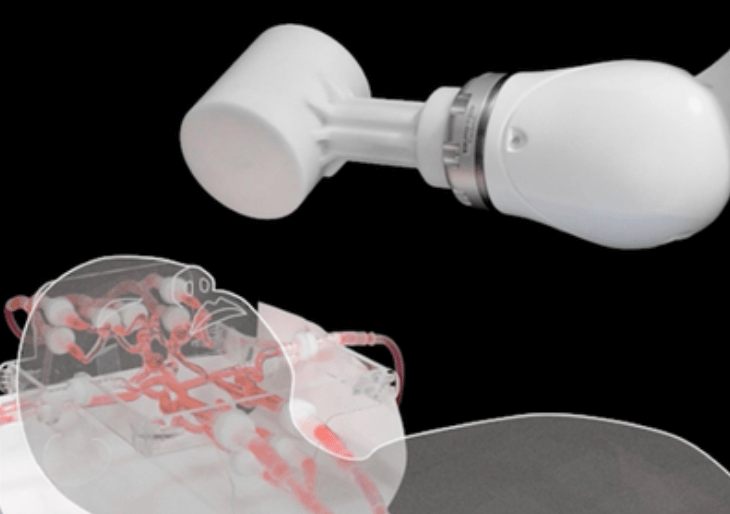A robot which allows brain surgeons to operate from miles way could save stroke patients, according to new research out of MIT. Doctors in one hospital can control the robotic arm in an operating theatre elsewhere with a joystick to safely remove blood clots, say scientists.
The delicate procedure, known as endovascular intervention, is usually carried out as quickly as possible in order to minimise any damage to the brain. It requires a surgeon to guide a thin piece of medical wire to the clot, so they can physically clear the blockage or use drugs to break it down.
But neurovascular surgeons are usually based at major medical institutions, making them difficult to reach in time for patients living in remote areas. Now scientists at Massachusetts Institute of Technology have come up with a solution which saves doctors and patients having to make these nightmare journeys.
“We imagine, instead of transporting a patient from a rural area to a large city, they could go to a local hospital where nurses could set up this system,” says study co-author Xuanhe Zhao, a professor of mechanical engineering and of civil and environmental engineering at MIT, in a statement. “A neurosurgeon at a major medical centre could watch live imaging of the patient and use the robot to operate in that golden hour.
“That’s our future dream.”

Other robotic systems have been tested to help surgeons carry out endovascular surgery. Procedures require the delicate task of twisting and guiding the thin medical wire through the body’s arteries and vessels without touching the sides. These systems usually rely on motors which advance and retract the wire while twisting it through the patient’s body.
“But having a robot twist with the same level of sophistication as a surgeon is challenging,” says lead author Yoonho Kim. “Our system is based on a fundamentally different mechanism.”
In 2019, the researchers managed to steer a thread through a life-sized silicone model of the brain’s blood vessels using a handheld magnet, about the size of a soup can. They have now attached the magnet to a medical-grade robotic arm, which can be controlled using a small joystick knob on a mouse.
The thread is just as thin and flexible as conventional medical wire, but is equipped with a magnetic tip, meaning it can be guided in any direction by simply tilting the joystick. Buttons on the mouse have been linked to a set of motorized drives, and can therefore be used to move forwards and backwards.
To test their new approach, the researchers installed their robotic arm in an operating room at Massachusetts General Hospital with a life-sized silicone model of blood vessels. They then set up the joystick and a monitor showing a live video of the model in a nearby control room from where surgeons could remotely take control of the wire. A group of neurosurgeons were then trained on how to operate the robotic arm from a distance.

After just one hour, each surgeon managed to guide the wire through the vessels which are usually difficult to navigate, the researchers found. They also used the robot to clear simulated blood clots in areas of the model which are considered difficult to reach.
Surgeons managed to guide the magnetic wire around sharp corners and turns to reach the simulated blockage. Once they had reached the clot, they were able to follow the standard treatment procedure.
“The primary purpose of the magnetic guidewire is to get to the target location quickly and safely, so that standard devices like microcatheters can be used to deliver therapeutics,” says Kim. “Our system is like a pathfinder.”
The robot could help ensure stroke patients receive treatment within the golden hour. It also means surgeons will be able to operate from another location and not be exposed to radiation from X-ray imaging.
“The neurosurgeons can operate the robot in another room or even in another city without repeated exposure to X-rays,” says Zhao. “We are truly excited about the potential impact of this technology on global health, given that stroke is one of the leading causes of death and long-term disability.”
Report by South West News Service writer Tom Campbell.












